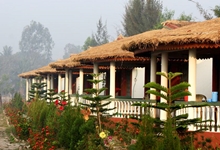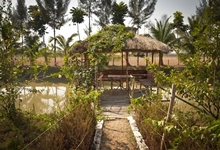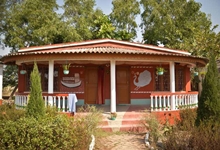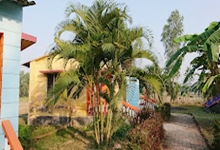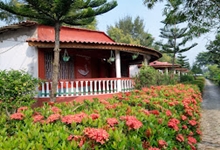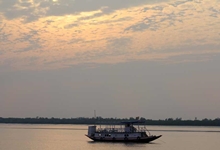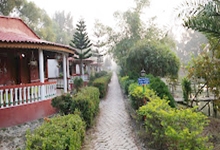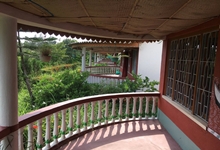SUNDERBAN NATIONAL PARK
Sunderban is regarded as the world’s largest mangrove forest and highly rich in bio diversity situated at the southern tip of West Bengal, India. The dense mangrove forests, the flora and the fauna together contribute to the magic of this vast delta of Sunderban. Positioned between the great Indian Rivers – The Ganges and the Brahmaputra, Sunderbans even stretches to River Meghna in Bangladesh. Sunderbans, a UNESCO world heritage site, is a part of the world’s largest delta formed by three key rivers of the subcontinent namely – Ganga, Brahmaputra and Meghna. Situated on the lower end of Gangetic West Bengal, the Sunderbans is crisscrossed by hundreds of creeks and tributaries. It is one of the most attractive and alluring places remaining in Earth which is still a vast virgin paradise. The Sunderbans, literally meaning beautiful forest – possibly refer to the presence Sundari trees (Heritiera Minor – a local mangrove species) that abundantly grows here. Alternatively, it has been proposed that the name Sunderban is a corruption of Samudraban (Sea Forest), or Chandra-bandhe, the name of a tribe present in this region. Sunderban is the largest single block of tidal, halophytic mangrove forests in the world. Spanning over an area of 4,264 sq km. in India alone the Sunderbans is the largest Tiger Reserve and National Park in India and is also a must see destination for the birdwatchers. A land of 54 tiny islands, which was once infested by Arakanese and Portuguese pirates, is now the abode of varied flora and fauna population. Apart from being a unique largest mangrove eco-system of the world, the Sunderbans has the world’s largest deltaic mangrove forests and is also home to one of India’s most iconic wildlife species – the Royal Bengal Tiger. Sunderban is also the world’s largest estuarine forest intersected by a network of tidal waterways, small islands of salt-tolerant mangrove forests and mudflats. The interconnected network of waterways makes almost every nook and corner of the forest accessible by boats or rafts for tourists. The Sunderbans also serves as a crucial protective barrier for the inhabitants in and around the region against the floods that result from the cyclones which are a regular occurrence. Sunderban’s evergreen mangrove forests are pulsating with myriad forms of life. The sea creeps in at high tide. The forests floats, the ebbing waters reveal nature so alive on the glistering mud flats. The land is split by numerous rivers and water channels all emptying into the Bay of Bengal. Venture further to discover a rich tribal folklore. It is believed that Bonbibi, the goddess of the forest, protects the wood- cutters, honey collectors and fishermen on their hazardous missions.
General Information:
Area: 2608 sq km, Altitude: Sea Level
Temperature: Summer – 38 degree Celsius to 42 degree Celsius and winter – 09 degree Celsius to 22 degree Celsius.
Clothing: Summer – Tropical/ Cotton and winter – Woollens
Languages: Bengali, Hindi and English
Best Season: September to March
Entry Points: Godkhali, Sonakhali and Canning
History of Sunderban National Park:
Sunderban was declared as the core area of Sundarbans Tiger Reserve in the year 1973 under project Tiger and also recognized as a Ramsar Site (a wetland of international importance). In the year 1977 Sunderban was declared a wildlife sanctuary. Later in the year 1984 Sunderban was declared as a National Park. In the year 1987 Sunderban was recorded as ‘World Natural Heritage Site’ by UNESCO and also declared Sunderban as the world’s largest area under ‘Global Biosphere Reserve’.
Wildlife diversity in Sunderban:
Flora: The Sunderbans, literally meaning beautiful forest – possibly refer to the Sundari trees that abundantly grows here. Apart from this Sunderban is also home to more than 66 species of flora which mainly constitute the dense wilderness of this national park these are namely Gewa, Goran, Keora which occur prominently throughout the area. The clumsy roots of Garjan trees have added fine textures to the beauty of Sunderban and are seen in abundance. Other notable species found in Sunderban are Dhundal, Passur, Kankra, Golpata and others. Golpata tree is a derivation of Palm species, the leaves of which are used by the local tribal people to make the roof of the house which stays for longer periods. These mangrove floras have the ability to withstand estuarine conditions and saline inundation arising from tidal effects.
Fauna: The Sundarbans provides a unique ecosystem and a rich wildlife habitat. But Sunderban is more popularly known as the dominating territory of the famous Royal Bengal Tiger also known as the swamp tigers, these handsome predators have adapted themselves very well to the saline and aqua environs and are extremely good swimmers. More than 250 big cats are recently recorded to inhabit the territory of Sunderban. Apart from this an incredible variety of other wild animals found in Sunderban are Wild Hog, Chital Deer, Fishing Cats, Rhesus Monkeys, Barking Deer, Macaques, Indian Grey Mongoose, Leopard Cats, Wild Boar, Jungle Cat, Fox, Flying Fox, Pangolin and a lot more.
Avifauna: Sunderban serves as a home to rich variety of birdlife and it is recorded that around 286 species of birds are found here like Brown Winged Kingfishers, Lesser Adjutants, Ospreys, White Bellied Sea Eagles, Grey Headed Fish Eagles, Open Billed Storks, Black Headed Ibis, Water Hens, Pheasant Tailed Jacana, Brahminy Kites, Marsh Harriers, Swamp Partridges, Red Jungle Fowls, Spotted Dove, Common Mynah, Jungle Crow, Jungle Babblers, Cotton Teal, Herring Gull, Caspian Terns, Grey Herons, Great Egrets, Night Heron, Wood Sandpiper, Green Pigeons, Cormorants, Common Kingfisher, Black Tailed Godwits, Little Stints, Golden Plovers, Pintails, Lesser Whistling Duck and many others.
Aqua fauna: The different varieties of aqua fauna dominating the region of Sunderban are Alligator, Crocodiles, Mudskipper, Monitor Lizard, King Cobra, Rock Python, Water Monitor, Hawk Bill Turtle, Green turtle, Sea snake, Saltwater Crocodile, South Asian River Dolphin, Common Krait, River Terrapin, Indian Flap Shell Turtle and others. Fish and amphibians in the Sunderbans include Saw Fish, Electric Ray, Common Carp, Silver carp, Barb, River Eels, Starfish, King Crab, Fiddler Crab, Hermit Crab, Skipper Frogs, Tree frogs. Sunderban National Park is also noted for its conservation of the Olive Riddle Sea Turtles.
Activities in Sunderban:
Creek riding by safari boats
Village walk and interaction with the natives
Fishing with the local fishermen
Mangrove walk
Mud walk
Bird watching
Forest view from watch towers and interpretation center
Canopy walk
Enjoy local cultural dance and drama
Test local cuisine with a wide variety of fresh fishes and organic vegetables and fruits.
Do Ban Ki Watch Tower:
Do Ban Ki Watch Tower renders canopy walk that a tourist can carry out to view the riveting flora and fauna. This canopy walk is at an elevation of 20 feet from the ground and is about half a kilometer in length.
Netodhopani Watch Tower:
Netidhopani Watch Tower lies on the edge of the Buffer and Core Area of the Sunderbans National Park is known for a tiger watchtower that is stationed near a sweet water pond. Netidhopani is also popular for Manasmangal story and there is the remains of a 400 year old temple that draws visitors for its mystique and charm.
How to reach:
Air: Sunderban National Park is located 140 km away from Kolkata Airport.
Rail: The nearest railhead of Sunderban is Canning railway station which is located 29 km away from the gateway to Sunderban (Godhkhali).
Road: Sunderban National Park is well connected with Kolkata – Basanti Highway. The road map from Kolkata to Sunderban is Kolkata Metro – Tolloyguange Tram depot – Garia Main Road – Baruipur Canning Road – Cross Basanti Police Station – Take the State Highway 03 – Arrive at Godhkhali and Ferry to Gosaba – Gosaba to Pakhiralay by local transport – Sunderban National Park. The embarkation points from Kolkata are: Namkhana (105 km), Sonakhali (100 km), Raidighi (76 km), Canning (64 km) and Najat (92 km).
Godkhali Port:
Located just opposite to Gosaba Island and Gosaba is the last inhabited island towards Sajnekhali Wild Life Sanctuary and Sunderban Tiger Project area of Sunderban Reserve Forest. The shortest route distance to Godhkhali Port from Kolkata is 82 km and 95 km away from Kolkata Airport.
Koikhali:
Koikhali is nearer to the Haliday wildlife sanctuary and tourist’s attractions are Bonnie Camp, Kalas Island and beach, Haliday Island etc. of Sunderban Reserve Forest. Koikhali is 83 km from Kolkata and 92 km away from Kolkata Airport.
Namkhana:
Namkhana is 117 km away from Kolkata and 123 km away from Kolkata Airport. Namkhana is also connected with railway from Kolkata and is around 109 km away. This place is closer to Bhagabatpur Crocodile project and Lothian wildlife sanctuary of Sunderban.
Canning:
Railway distance from Kolkata to Canning is 45 km and 29 km away from Godkhali Port. Public transportations are available between Canning and Godkhali port.
Waterways: Approximate time taken between tourist points:
From Namkhana – Bhagabatpur Crocodile Project (2.5 hours), Sagar Island (2.5 hours) and Jambudwip (3.5 hours).
From Sajnekhali – Sudhanyakhali (40 minutes), Buridabri (Tiger Project Area – 05 hours), Netidhopani (3.5 hours), Haliday Island (03 hours). From Sonakhali – Gosaba (01 hour). From Raidighi – Kalas Island (05 hours)
Entry Permits:
For foreign visitors only: To visit Tiger Project area including Sajnekhali Bird Sanctuary permission to be obtain from Tourism Centre at Kolkata. For the Indian and Foreigners are required to take entry permits of the Forest Department from Basanti or Forest Department officer near Sonakhali Jetty.
Best time to visit: The best time to visit Sunderban is from September to March.
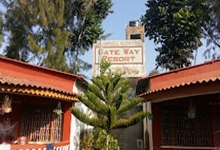
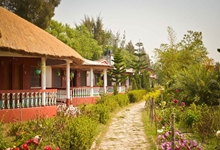
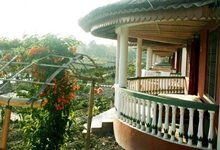
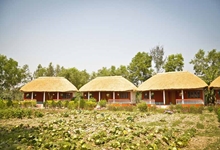
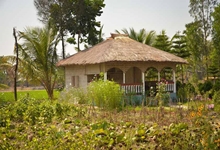
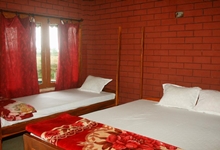
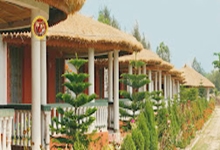



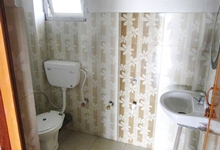
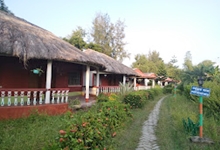
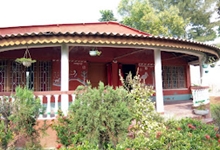

SUNDARBAN GATEWAY RESORT
Sundarban Gateway Resort is a unique effort towards providing tourists a nice venture in Sundarban. Eco tourism, sustainable tourism and Eco Farming these three areas are the main focus of Sundarban Gateway Resort to promote the rural side of Sunderban. To promote this rural area Sundarban Gateway Resort has given the chance to the local people to promote their handicraft works, other part of their daily work life. From Sundarban Gateway Resort tourists can opt for cruise and explore the flora and fauna of this world heritage biosphere. Sundarban Gateway Resort has excellent staffs those serving tourists with utmost priority. Sundarban Gateway Resort is at a 5 minutes walking distance from Sudhanyakhali entrance point. Sundarban Gateway Resort has a very big campus with lots of greenery all around along with water bodies. Sundarban Gateway Resort provides accommodation in individual cottage type with AC provision too.
Facilities available:
All cottage type accommodation.
All rooms are equipped with AC.
All rooms have attached western toilet.
In house multi-cuisine restaurant.
River Cruise facility available.
Pick up and drop facility available.
Tariffs:
Tariffs are based on package basis.
Package differs from 01Night/02 Days, 02 Nights/ 03 Days, 03 Nights/ 04 Days.
The rates of the above published packages depends on the number of pax.
Tour package includes: Night halt in AC/ Non AC Cottages, Sightseeing by boats, All meals included, entry permits and guide charges, pick up and drop.
HOW TO BOOK: Call 9831311606 , 9830381306 and get the current rooms availability status or use the query form below.
Or visit us at 8C Shanti Ghosh Street, Kolkata – 700003, near Manindra Chandra College. Or drop your query by Whats app in the above numbers.
